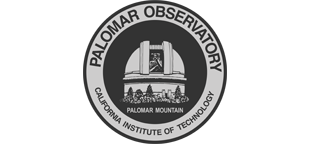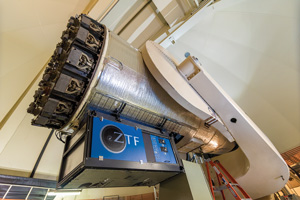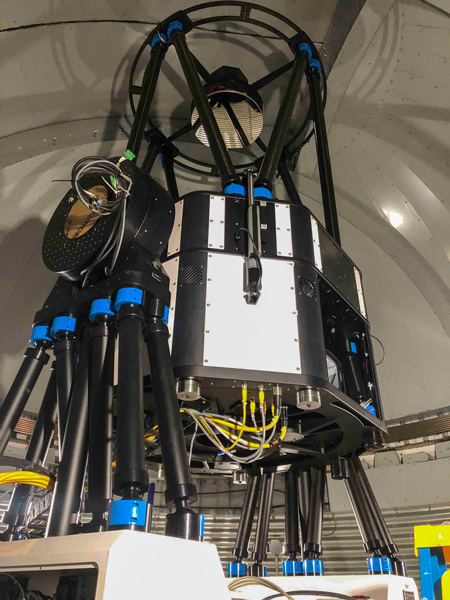
|
|

|
Observatory-Affiliated Projects
Palomar Observatory has a long history of hosting novel and innovative new astronomy projects. The following is a sample of the new developments we are pursuing at the Observatory:
ZTF
The Zwicky Transient Facility (ZTF), named for Caltech astronomer Fritz Zwicky, is the latest in an arc of optical transient projects hosted on the Palomar Oschin and 60-inch telescopes. A novel 600 megapixel camera paired with the Oschin operates as the robotic discovery engine for ZTF, and the 60-inch telescope robotically provides followup low-dispersion optical spectroscopy for rapid transient source classification. ZTF serves a large international collaboration of astronomers, and the US National astronomy community under sponsorship of the US National Science Foundation.
More information is available at the ZTF website.
Gattini IR
Palomar Gattini IR is a novel wide-field (25 deg2 field of view), near-infrared transient survey project, scanning the skies robotically every clear night. It searches for astronomical transient events in the infrared J band (1.25 μm center-band wavelength), and is a technical precursor for more ambitious transient surveys at Palomar and elsewhere.
More information is available at the Palomar Gattini IR project website.
WINTER
The Wide-field INfrared Transient ExploreR (WINTER) began operations in late 2023, and robotically searches the skies for transient sources in near-infrared wavelengths (Y, J and Hs) invisible to ZTF. WINTER targets novel transients beyond the reach of optical surveys. Just like ZTF, this project received development and operations support from the US National Science Foundation, and makes data available to the astronomical community and public.
More information is available at the WINTER website.
PARVI
The PAlomar Radial Velocity Instrument (PARVI) is a new capability for Palomar/P200, developed by a collaboration between Jet Propulsion Laboratory (JPL), American Museum of Natural History (AMNH), and Caltech scientists and engineers. It has the promise of making radial velocity (motion along the line of sight to a star) measurements of stars at exquisite levels of precision—better than 1 meter/second for bright stars.
More information is available at a Big Eye newsletter article.
Questions? We've answered many common visiting, media, and academic questions in our public FAQ page.
Please share your feedback on this page at the
COO Feedback portal.
Projects / v 1.0.4
Last updated: 29 March 2025 ACM
|
|
|


